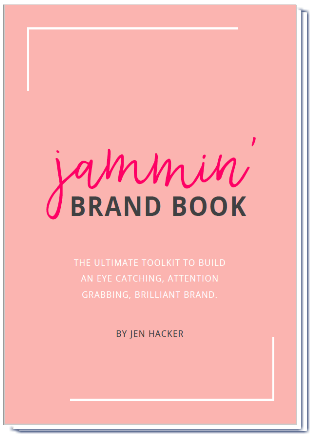4 Things to Consider When Shopping for Your Next Pair of Sneaks
I started running when I was thirteen. In those days, a long run maxed out somewhere in the neighborhood of two miles. Literally, somewhere in the neighborhood. When I started high school I joined the cross country team under the counsel of my mom who had warned me that getting involved would be the only way to make friends. My long-runs crept up for two mile sprints to eight mile hauls. Come college I stepped up my game from 5K races to full marathons. It was in the training for 26.2 miles of pavement pounding that I truly felt I could consider myself an expert in the sport.
As someone who had now been running for over a decade (when did I get so old?), I know that the my shoes can make or break a run. Unlike a new pair of pumps, this is not the time to choose your shoes based on aesthetics. If you truly want to have a great running experience you need to follow the advice you’ve probably heard your mother dish out– look for comfort over all else.
Here, to help you pick out the perfect pair, I’m sharing 4 things you should consider when shopping for your next set of running shoes. And just for fun, I’m throwing in a round up of the latest batch of running shoes to hit the shelves because, lets be honest, good advice is easier to follow when served up in style.
1. Know Your Foot Type & Running Style
Feet generally fall into one of three shapes–flat, high arches, or neutral. The easiest way to determine which shape your foot most closely resembles is by seeking out the expertise of someone at a specialty running store. You can also gauge your foot shape by having a look a the bottom of an old pair of sneakers. This is due to the fact that your foot shape has a lot of impact on your running style and can cause uneven wearing of your shoe soles.
If you have flat feet, you are also likely to over-pronate, or roll your feet in when you run. To correct for this, you’ll want to look for a stability shoe that can counter that movement. High arches can cause the opposite effect known as under-pronation, or the outward rolling of your foot. If this is you, you’ll want to see out a flexible shoes with a soft mid-sole that can absorb shock. If your lucky enough to have a normal foot- congrats! You are the least likely to experience problems and can opt for a neutral shoe.
In addition to consider how your foot rolls (or doesn’t) you should also think about where you place the most impact when you run. I know for example, that I have a strong tendancy to run heavily on my forefoot versus heal to toe. This style means I need a shoes with more cushion in upper sole than the heal however you might be the opposite depending on your personal style.
2. Account for Body Aches and Pains
Body pains can often be attributed to the wearing the wrong shoe. With your current pair, are you experiencing low back pain, shine splints, or other aches? If so, there’s a chance that the style you’ve chosen is to suited to your needs.
With my last pair of running shoes I decided to move from a well cushioned style into a minimalist one. Bad move. While I loved the lightweight feel, the reality was that the shoe did not provide the support I needed which resulted in lingering lower back pain after my long runs.
When you run your body absorbs 2.5x times its weight each time your feet pound the pavement. You need shoes that can support that kind of impact. If you want to avoid long-term injury it’s always best to pick a pair of shoes that is designed to meet the demands of the sport.
3. Think like Goldilocks- Not too small, Not too big, Just right
The fit of your running shoes is particularly important for achieving maximum comfort. Though you may think you know your shoe size it’s important to always remeasure before buying a new pair. Your foot shape changes over time and can get slightly longer or wider particularly if you run frequently.
When you try on your shoes, you want there to be a little room at the top of the toe box so that your toes don’t get pinched. You also want to pay attention to how the shoe feels around the foot. It should provide support but shouldn’t squeeze in any spots. You want to watch for any spots that rub funny and could cause potential. blisters.
Additionally, it’s important that you mimic exactly how you plan to wear the shoes. Bring a pair of socks you typically wear as well as any orthodics you use. If possible you should always shop for shoes at the end of the day when your feet are a bit swollen. Your feet also swell during a run so this is the most representative of the size you need.
4. Buy for Your Running Style
Your style of running plays a big role in the type of shoes that you need. There are three aspects to consider– distance, road type, and time of day.
Are you a sprinter or a long distance runner? Sprinters should look for lightweight shoes and will find the new minimalists styles attractive. Long distance runners on the other hand, should look for shoes that provide more cushion. The longer periods of continuos impact requires a shoe that can withstand the beating.
Do your runs typically take you to the road or into nature? Hard pavement surfaces can be rough on the knees and low back, another reason to look for shoes with extra cushion. Trail runs throw additional obstacles into the mix like loose dirt and rocks and are best maneuvered in a pair of shoes with heavy traction on the sole.
Do you find yourself heading out for a run when it’s light out or after the sun sets? If the latter, you’ll want to look for a shoe that has reflective material. This will help to keep you visible to others on the road.
>>Shop the Post!
Let us know what tips you’d add to our list! Comment below or tweet us @SingleDiariesXO!
Superbly Single,
Jen







































